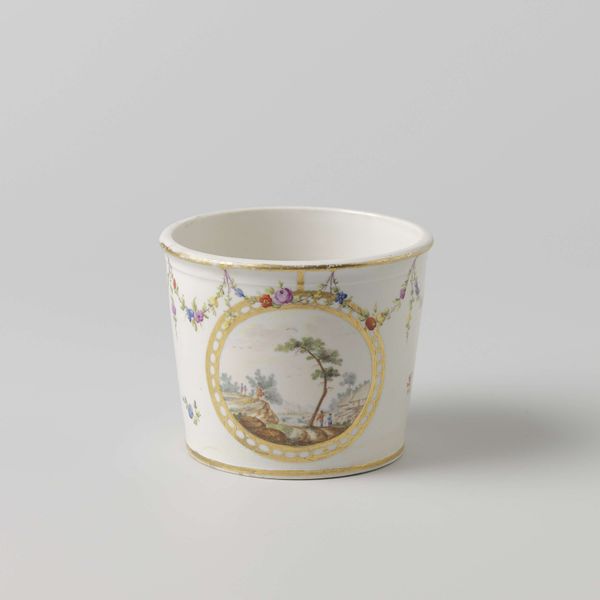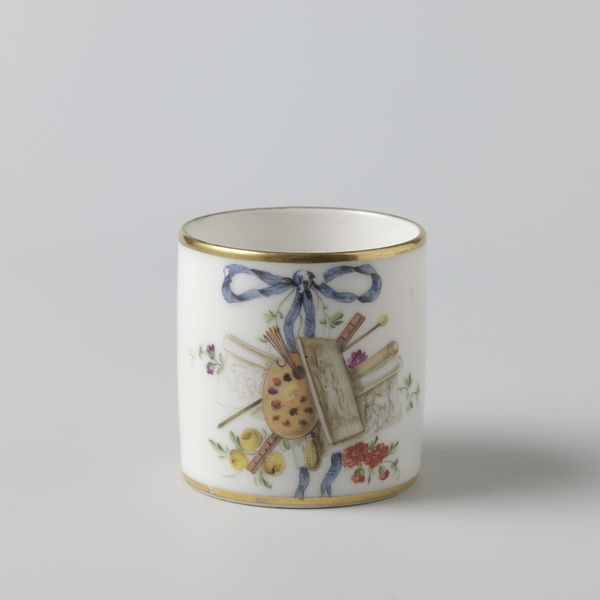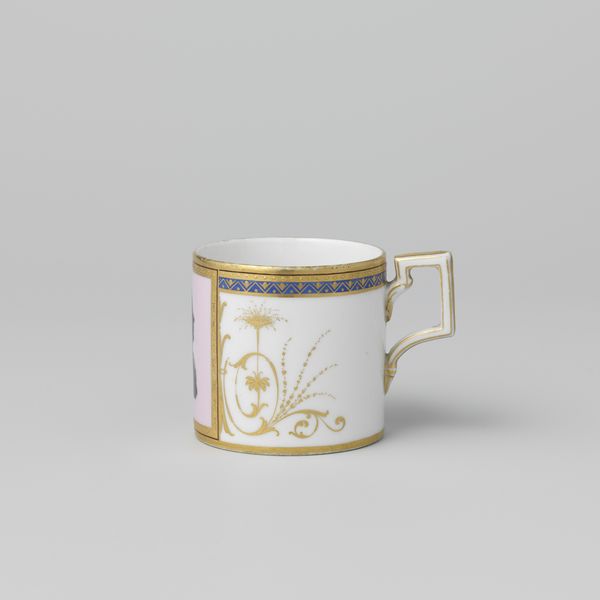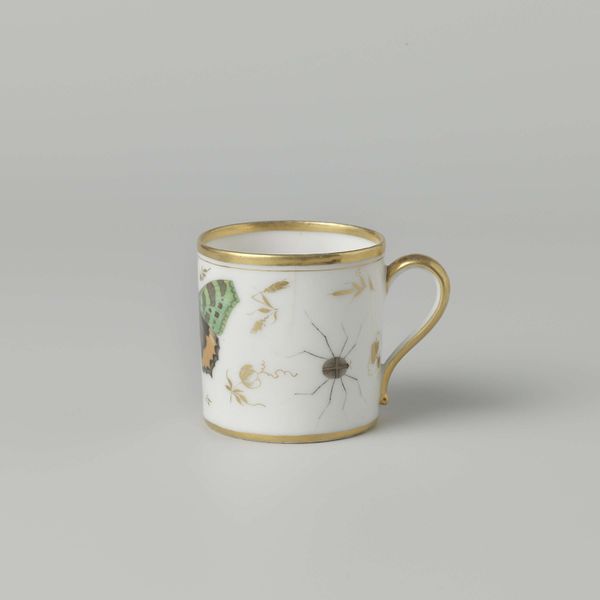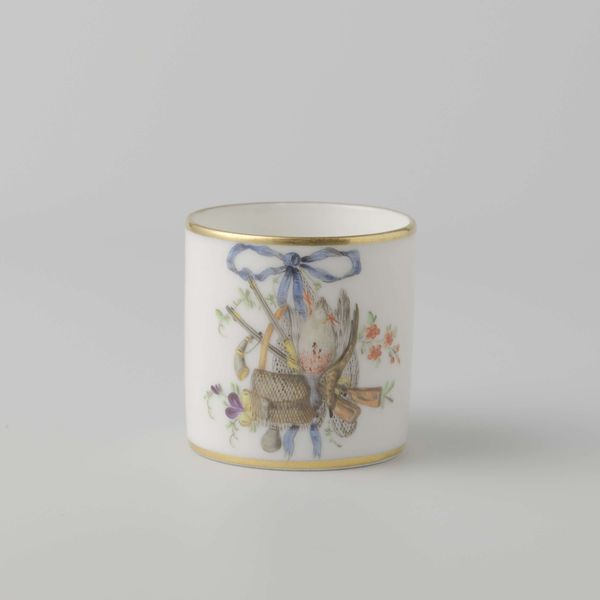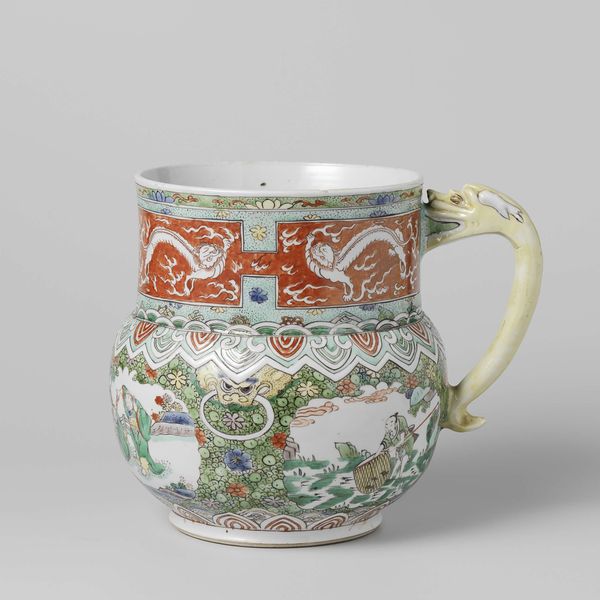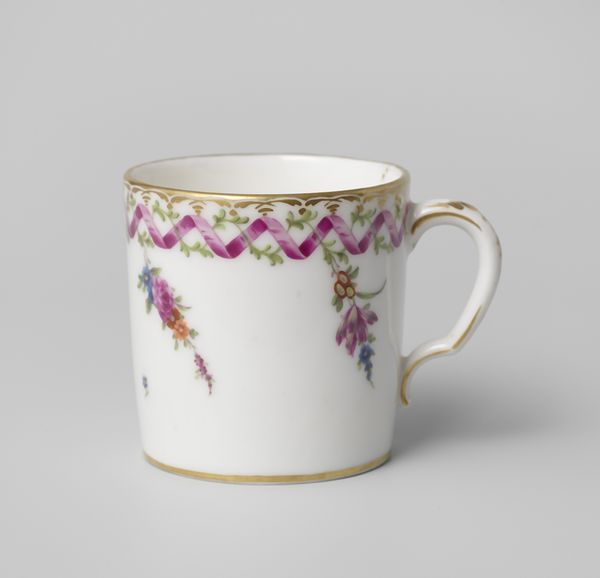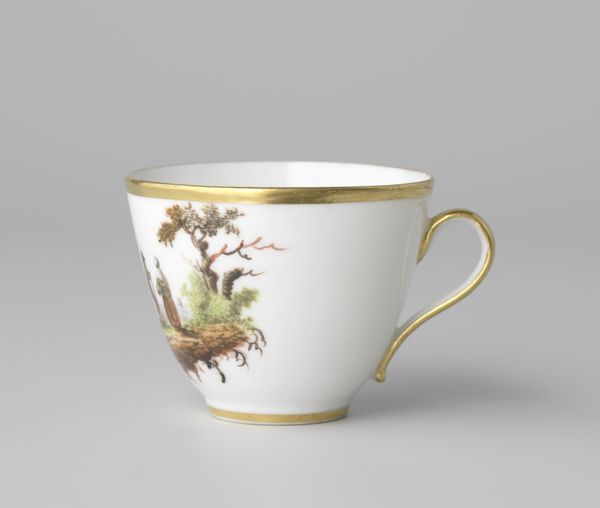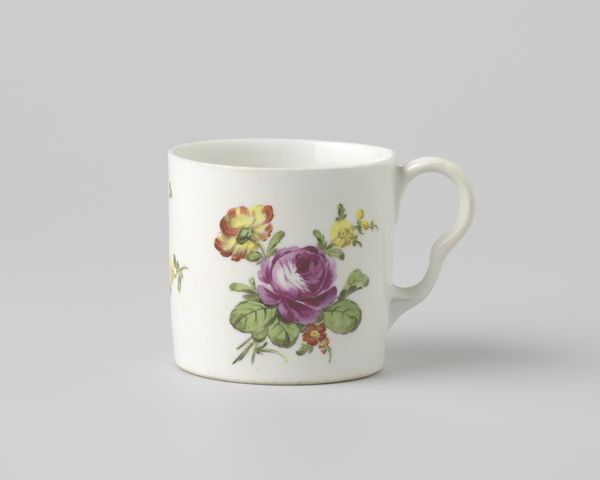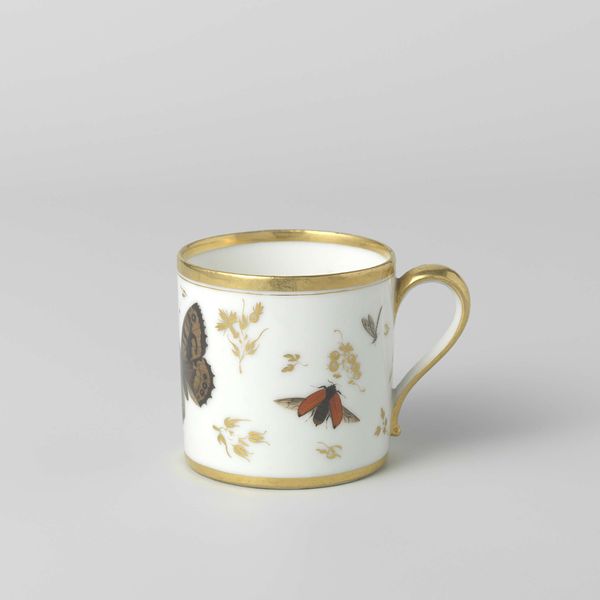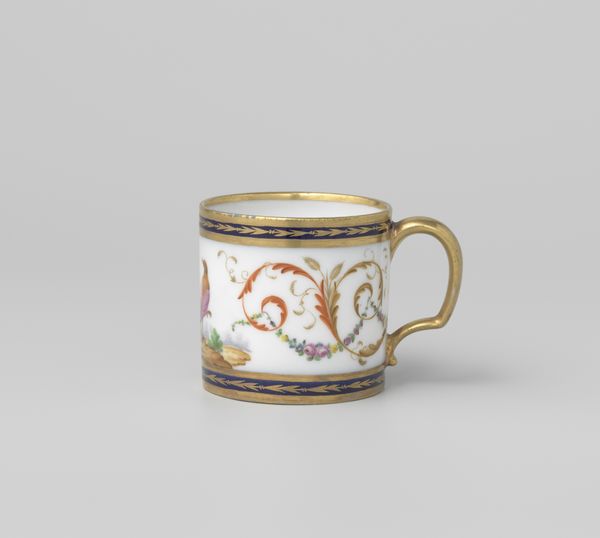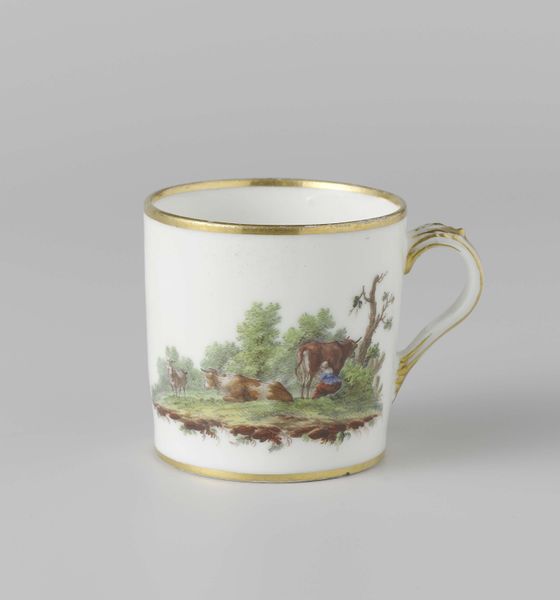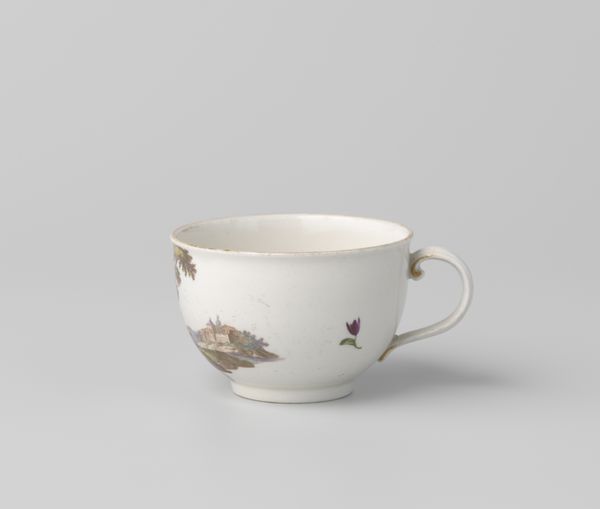
drawing, painting, ceramic, porcelain
#
drawing
#
neoclacissism
#
painting
#
ceramic
#
porcelain
Dimensions: height 6.2 cm, width 8.4 cm, diameter 6.3 cm
Copyright: Rijks Museum: Open Domain
Curator: Oh, it's lovely. The way the gold trim catches the light—like sunshine on cream. What are we looking at exactly? Editor: This is a teacup and saucer, made from porcelain sometime between 1809 and 1814. The maker? The Koninklijke Porseleinfabriek Dommer & Co., a royal porcelain factory, now held at the Rijksmuseum. Curator: Royal indeed. See the delicate painting? Faint ribbons holding up a fiddle. So neoclassical. Reminds me of garden parties I've never actually been to, complete with sonatas and whispered gossip. Editor: Painted, you say? Well, there's a story to that, too. The creation of porcelain itself involved intensive labour: mixing materials, firing kilns, detailed painting and glazing… the consumption habits and trading routes built upon colonial extraction practices fueled the market for these beautiful items. So much is literally at hand in such delicate creation. Curator: Fair enough. A revolution of material is brewing! I still see delicate elegance though. Those flowers look nearly alive—a tender, wistful song. It makes me think of mortality, like beauty meant to be savored because it cannot last. Editor: Savouring does come at a cost, doesn't it? Who does get to leisurely drink from painted vessels anyway? Also, think about the painter... the countless anonymous hands. But, let's appreciate their labor. Those miniature roses are quite vibrant given they’re constrained to curving, fired clay. Curator: Well, now I’ll probably never look at a fancy teacup the same way again, imagining legions of exploited workers. But in some ways I’m glad. It makes it even richer somehow. Editor: Exactly. The point is not just to enjoy, but also to understand all the ingredients, all of the hands involved that came together to form this teacup. Now, how about a drink? I brought coffee... in a travel mug.
